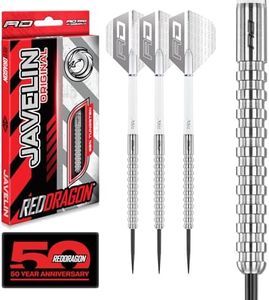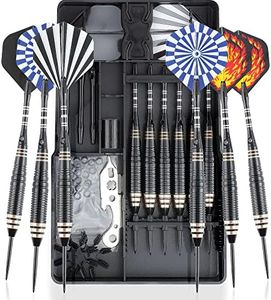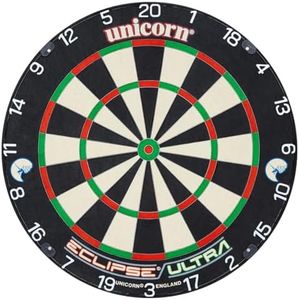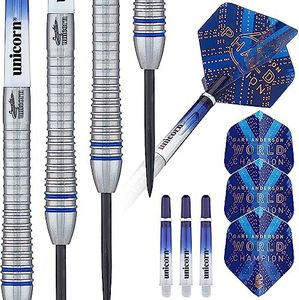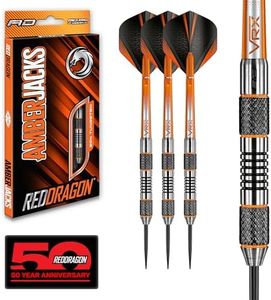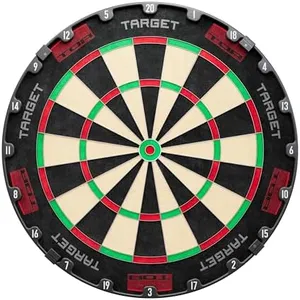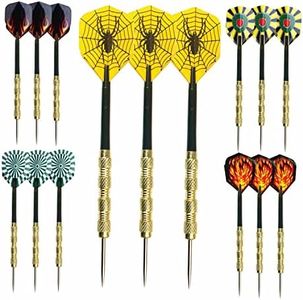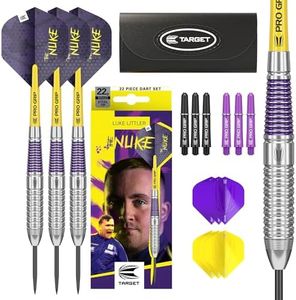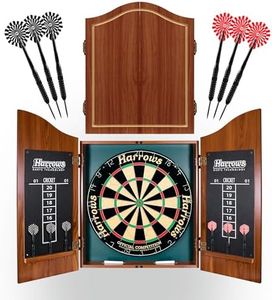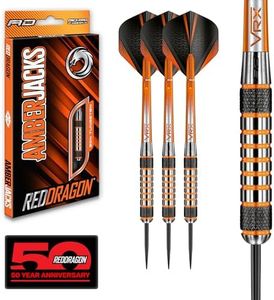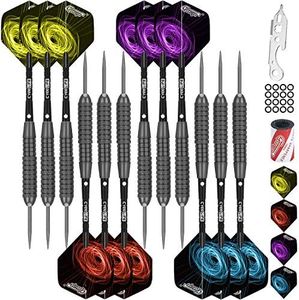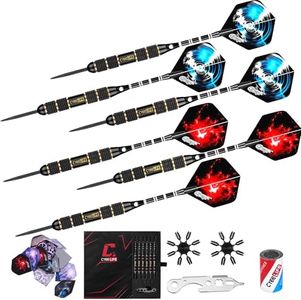We Use CookiesWe use cookies to enhance the security, performance,
functionality and for analytical and promotional activities. By continuing to browse this site you
are agreeing to our privacy policy
10 Best Darts
From leading brands and best sellers available on the web.Buying Guide for the Best Darts
Choosing the right darts is a personal journey because each player’s needs, style, and comfort are unique. Whether you are a beginner or have some experience, the right darts can greatly enhance your game and enjoyment. When picking darts, it’s vital to understand the main features and how they match up to your style of play and physical comfort. By learning about each key characteristic, you can try different combinations and find what feels best for you. Remember that practice and experimenting with different darts will also help you discover your perfect set.WeightThe weight of a dart refers to how heavy it is, usually measured in grams. Dart weights typically range from about 14 grams to 30 grams. Lighter darts (14-18g) tend to require a faster throw and are often favored by players who use a lighter, quicker style, while heavier darts (24-30g) need less force to throw and can offer more stability, making them popular with those who prefer a slower, more controlled throw. Mid-weight darts (19-23g) provide a balance and are a common starting point for many players. The right weight for you comes down to comfort, throw style, and what feels most natural after trying several options.
Barrel MaterialThe barrel is the main part of the dart that you grip, and it can be made from a few materials: brass, nickel-silver, or tungsten. Brass barrels are affordable and often used by beginners, but they are thicker and less durable. Nickel-silver is a step up in durability but still has a thicker design. Tungsten barrels are thinner and denser, allowing for slimmer darts that group more tightly on the board, but they are typically more expensive. If you are new, you might start with brass or nickel-silver, but as you gain experience, you may find the performance benefits of tungsten fit your growing skill.
Barrel GripBarrel grip describes the texture or pattern on the barrel, which influences how easily you can hold and release the dart. Some darts have smooth barrels, while others have rings, knurled patterns, or deep grooves. Heavier and more aggressive grip is good if your fingers get sweaty or you prefer a strong tactile feel, while a smoother grip might suit those with lighter touches. The best grip is one that feels secure in your hand without feeling uncomfortable or risking a sticky release.
Dart Length and ShapeDarts come in different lengths and barrel shapes, such as straight, torpedo, or scalloped. Longer barrels can help spread your fingers and give better control for some, while shorter barrels can allow for quicker, snappier throws. The shape also affects how the dart sits in your hand and how you release it. For beginners, a straight barrel is versatile and a good starting point, but you should try different shapes to see what aligns best with your grip style.
FlightsThe flight is the feathered piece at the rear of the dart that provides stability during flight. Flights come in different materials (plastic or nylon) and shapes (standard, slim, kite, and more). Larger flights offer more stability and suit a slower, arched throw, while smaller flights are better for faster, direct throws. Experimenting with sizes and shapes based on how you throw will help you find a flight that keeps your darts straight and consistent.
Shaft Length and MaterialThe shaft connects the barrel to the flight and can affect the dart’s balance. Shafts come in short, medium, or long lengths, and in materials like plastic, nylon, or aluminum. Short shafts keep the dart's center of gravity forward, helpful for certain grips and throwing styles, whereas long shafts move the balance backward, which can aid those who grip near the end. Medium is a safe choice for most, but as your style develops, you can change shaft lengths and materials to see what complements your grip and throw.
